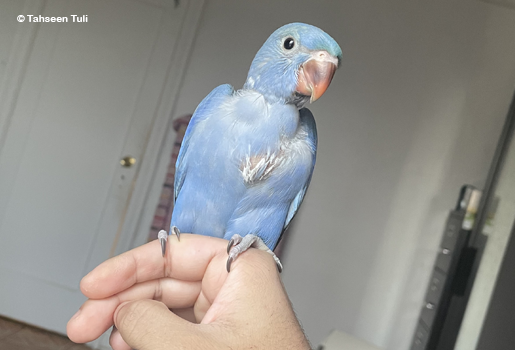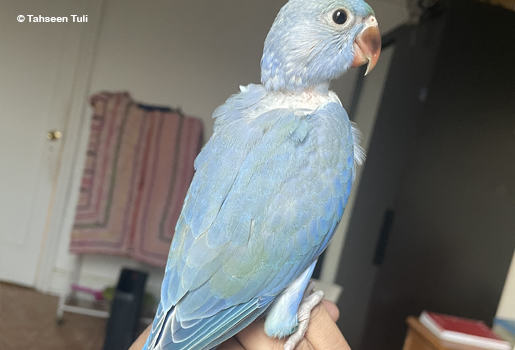

Based on the information you provided, it can be challenging to determine the sex of a juvenile Indian Ringneck just by looking at it. However, I can share some general indicators that might help you figure it out over time. From the photo of your Ringneck, it looks like a female; however, to be completely sure, a DNA test must be done, or you must wait roughly two years.
One of the main visual differences between male and female Indian Ringnecks is the neck ring. Males typically develop a distinctive ring around their neck, which starts to become visible when they are around 18 months to 3 years old. Since your Ringneck is just a juvenile, it will take time to know this for sure. Females generally lack this ring or have a much fainter version.
A great way that I used to get an idea of the sex of my juvenile Ringnecks was through their feet. Female Ringnecks tend to have a wider stance and thicker feet, while males usually have thinner, more dainty feet in comparison. These differences can become more apparent if you breed Ringnecks and can compare males and females; it takes a trained eye.
For a definitive answer, you might want to consider DNA testing, which is a reliable way to determine the sex of your parakeet. DNA testing can be done at any age and provides an accurate result, saving you the wait and uncertainty. If you’re eager to know your parakeet’s sex without having to wait for physical and behavioral indicators to become clear, DNA testing is the best option.
Overall, while visual and behavioral clues can provide some hints, they are not always conclusive, especially in juveniles. Observing your parakeet as it matures and considering a DNA test are the best ways to determine whether you have a male or female Indian Ringneck.
Best wishes,
IMRAN-C
Looking for help, don’t hesitate to e-mail me at indianringnecks@gmail.com or post on our forum.
